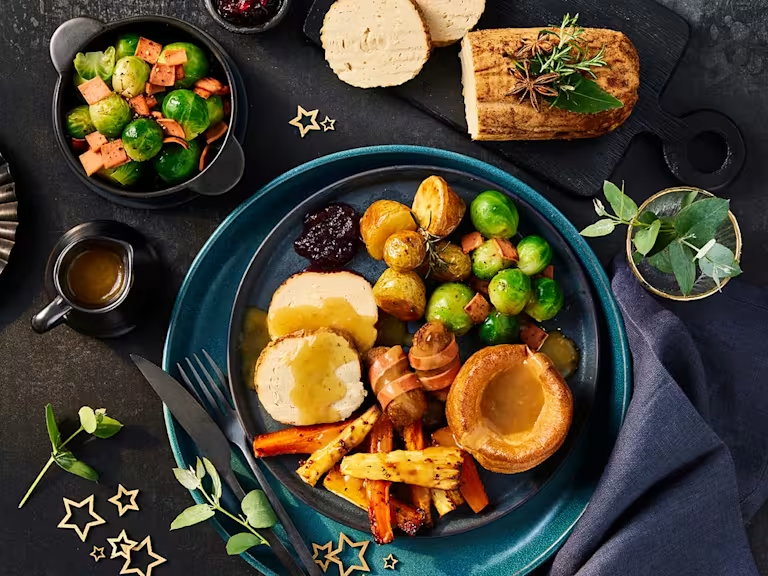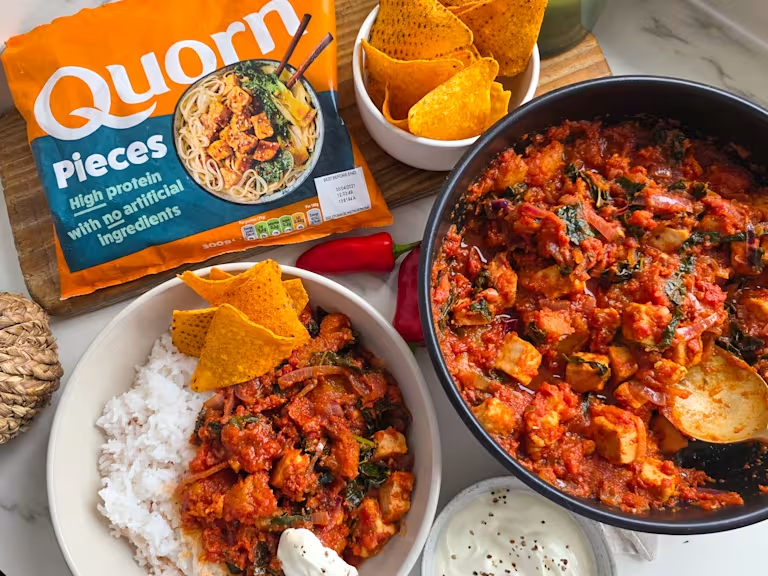
What is a healthy diet?

Eating a healthy diet doesn’t have to be complicated, so we’ve put together some top tips to help you and your family on your way. Whether you’re a meat-eater, veggie, vegan or simply trying to reduce your meat intake where you can, eating healthy should be fun and enjoyable for the whole family!
Eating a healthy diet doesn’t have to be complicated, nor is it exclusive to a certain label or set of rules. That’s why we’ve put together this blog post to help you and your family on your way to eating a healthy, balanced diet that is colourful, tasty and full of variety that suits your needs. Whether you’re a meat-eater, veggie, vegan or simply trying to reduce your meat intake where you can, eating healthy should be fun and enjoyable for the whole family!
A healthy, balanced diet is an important part of maintaining good health and can help you feel your best. The NHS define this as eating a wide variety of foods in the right proportions, and consuming the right amount of food and drink to achieve and maintain a healthy body weight.1 As always though, people with special dietary needs, allergies or medical conditions should always seek advice from their GP or Registered Dietitian before changing their dietary patterns.
You may have heard of the Eatwell Guide2 and this is the UK Government’s healthy eating guidelines, which have been developed using evidence-based nutritional science. There are also other versions of this guide such as the Vegetarian Eatwell Guide3, developed by the Vegetarian Society, and the Vegan Eatwell Guide4, developed by the Vegan Society. Understandably, these guides have their differences however, the overall message is the same – eat a colourful diet that is full of variety, sustainable and enables you to meet your average daily energy demands.
Note: energy demands are unique to every individual and depend of a range of factors such as age, physical activity levels, gender and body size - just to name a few. In order to be applied at a populational level, Public Health England have set Estimated Average Requirements (EARs)5. As a guide, an average man needs around 2,500kcal a day and for an average woman is around 2000kcal a day, to maintain a healthy body weight6.
What are the main dietary messages of the Eatwell Guides?
1. Eat at least 5 portions of a variety of fruit and vegetables every day
Fruits and vegetables should make up over a third of the food we eat each day. Aim to eat at least 5 portions of a colourful variety of fruit and veggies per day and you can choose from fresh, frozen, tinned (not in syrup), dried or juiced – they all count!
One portion of fresh, frozen or tinned fruit and veg equals 80g. One portion of dried fruit equals 30g. One portion of smoothies or juices equals 150ml.
Note: fruit juice and smoothies should be limited to no more than a combined total of 150ml per day. No matter how much you drink, they will only count as one portion per day because of the sugars that are released during the blending process, which may increase the risk of tooth decay if consumed too often.
The same applies for beans and pulses too – no matter how much you eat, they will only count towards one portion of your 5-A-DAY. This is because, although they are a great source of fibre, they do not contain as many vitamins and minerals as other fruit and veggies.
2. Choose wholegrain or higher fibre versions of starchy carbohydrates such as bread, rice and pasta with less added fat, salt and sugar where possible
Starchy foods are a good source of energy and the main source of a range of nutrients in our diet such as fibre, calcium, iron and B vitamins. Choosing wholegrain or higher fibre varieties where possible can help contribute to your daily fibre intake. Fibre helps to keep your digestive system healthy, can help you feel fuller and can help move other food and waste products through your gut. It is recommended that we aim for at least 30g of fibre per day. However, in the UK, we currently eat on average just 18g of fibre per day7!
3. Have some dairy or dairy alternatives, choosing lower fat and lower sugar options where possible
Dairy products are an important source of calcium which helps to keep our bones nice and strong. Choosing unsweetened calcium-fortified dairy alternatives are a good alternative to dairy products and so therefore also count as part of this food group too.
When buying dairy alternatives, it’s important to read the label and choose varieties that have also been fortified with vitamins and minerals such as vitamin D and iodine.
4. Eat some pulses such as beans and lentils and other meat or plant-based proteins
Pulses, such as beans and lentils, and nuts and seeds are good sources of plant-protein, low in fat and high in fibre.
If you choose to eat fish, aim for at least 2 portions of sustainably-sourced fish each week, 1 of which should be an oily fish like salmon or mackerel which are high in omega-3 fats.
Note: If you don’t eat fish, walnuts and ground linseed are also good sources of omega-3 fats.
If you follow a vegetarian or vegan diet, or are looking to reduce your meat intake, include meat alternatives such as tofu, Quorn Mince or Quorn Pieces and other Quorn products which are low in saturated fat, high in protein and often a source of fibre. Quorn products all contain Quorn mycoprotein, which is a fungi-derived protein that contains all 9 essential amino acids – just like meat, fish and eggs!
5. Choose unsaturated oils and spreads, and eat in small amounts
Too much fat in our diets, especially saturated fat found in meat, pastries and chocolate, can raise our cholesterol levels, which is linked to an increase risk of heart disease. Unsaturated fats are healthier fats since they have been found to protect our heart by maintaining levels of our ‘good’ HDL cholesterol, while reducing levels of our ‘bad’ LDL cholesterol.
However, it’s important to remember that all types of fat are high in calories, and so should be used sparingly. A tip to manage your fat intake, is to use a measuring spoon when adding oil to pans for cooking. In fact, the British Heart Foundation suggest that one tablespoon of oil is enough to use between four people8.
In summary, incorporating more vegetables, fruits, grains and legumes into your diet while reducing meat portions and switching to meat-alternative protein can help you transition into a meat-free/flexitarian diet.
If you’re already eating less meat or have eliminated this from your diet completely, take a look at our range of products to include within your meals. And of course, we have lots of recipe inspiration to get you started. You’ll find a delicious range of deliciously healthy meal ideas here, along with so much more in terms of recipes for different cuisines and meal occasion right here. 1https://www.nhs.uk/live-well/eat-well/ 2https://www.gov.uk/government/publications/the-eatwell-guide 3https://https://vegsoc.org/eating-veggie/nutritional-advice/ 4https://www.vegansociety.com/sites/default/files/uploads/downloads/The%20Vegan%20Eatwell%20Guide_2.pdf 5https://www.nutrition.org.uk/healthy-sustainable-diets/nutrient-requirements/ 6https://www.nhs.uk/live-well/healthy-weight/understanding-calories/ 7https://assets.publishing.service.gov.uk/government/uploads/system/uploads/attachment_data/file/699241/NDNS_results_years_7_and_8.pdf 8https://www.bhf.org.uk/informationsupport/publications/healthy-eating-and-drinking/portion-info/oils-and-spreads
By Holly Roper, Registered Associate Nutritionist
Recent news
All news
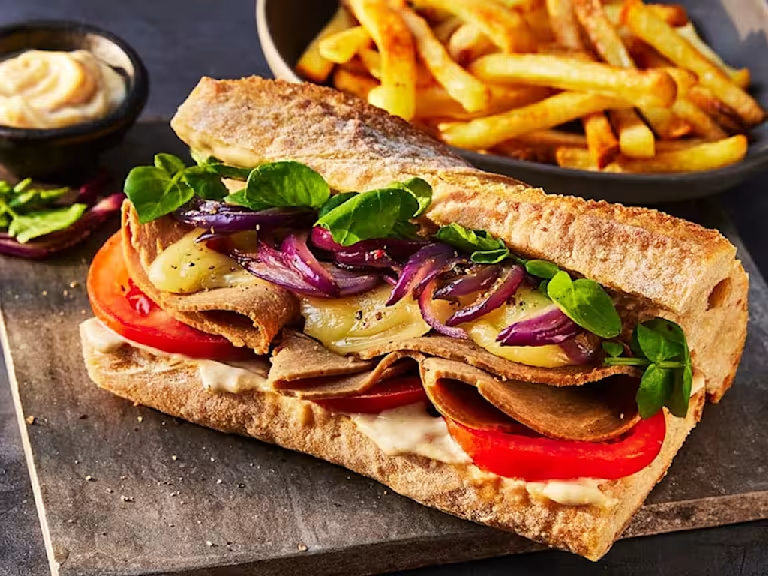
The Ultimate Sandwich Guide
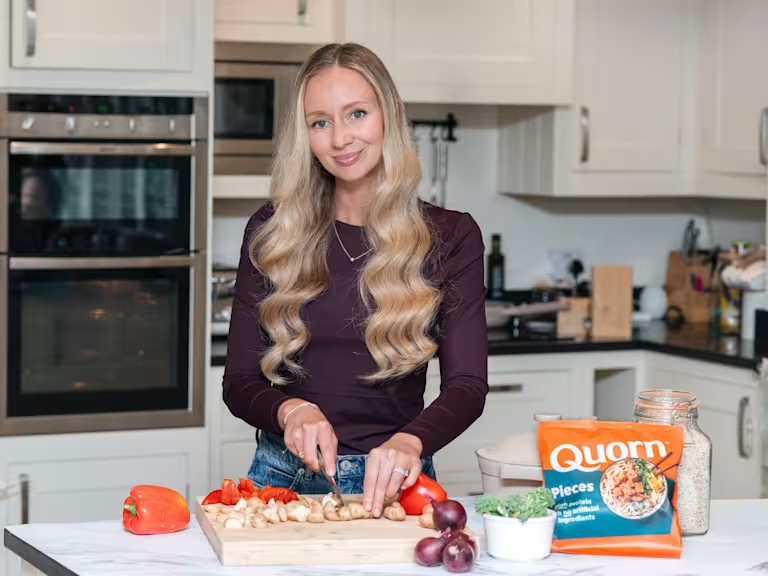

Sustainability WINNERS – FDF Awards 2025
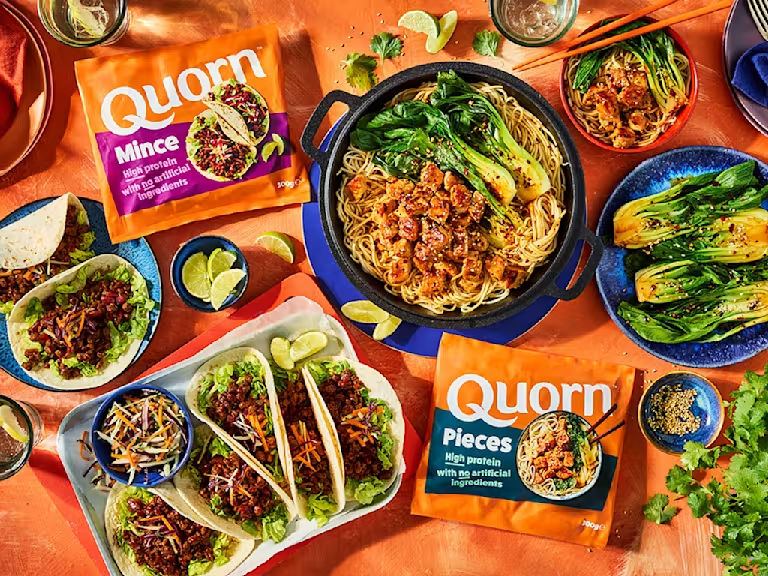
No Artificial Ingredients
